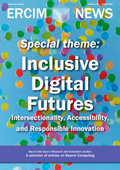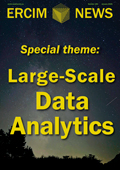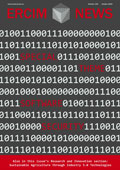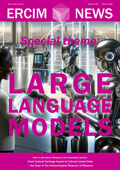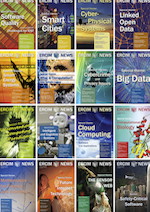by André Paul (Fraunhofer FOKUS)
A new low-code toolchain enables resilient, real-time collaboration among heterogeneous edge devices, forming intelligent and autonomous swarms for smart IoT applications. By integrating semantic interoperability and dynamic self-organisation, these swarms can operate independently at the edge, even in changing or unpredictable environments. The SmartEdge project brings together advanced networking, AI, and usability tools to empower next-generation distributed systems.
SmartEdge (L1), an EU-funded research project, is advancing the development of autonomous intelligent swarms, networks of decentralised edge devices working together in dynamic, secure, and adaptive environments. SmartEdge defines key technical concepts that underpin this vision, providing a comprehensive framework to support real-time, semantic collaboration between diverse edge nodes.
Started in 2023, the SmartEdge project aims to address key challenges in building and managing distributed systems of edge devices, such as scalability, privacy, and the ability to adapt on the fly to changing contexts. This is accomplished through a modular low-code toolchain that enables non-experts to design, deploy, and manage intelligent swarms of devices across domains such as robotics, transportation, and industrial automation. To do so, it focuses on real-world applications where autonomous swarms of edge devices deliver clear benefits across sectors. Use cases [L2] demonstrate the toolchain’s flexibility and scalability:
Smart Manufacturing: Autonomous mobile robots (AMRs) and sensors collaborate in real time to optimise production lines, adapt to dynamic factory layouts, and ensure predictive maintenance with minimal human intervention.
Intelligent Transportation: Vehicles and roadside units form dynamic swarms to manage traffic at intersections, share hazard warnings, and optimise routing—enhancing both safety and traffic flow without relying solely on central cloud coordination.
Healthcare and Assisted Living: Wearable and environmental sensors form adaptive swarms to monitor patient health, detect anomalies, and support real-time decision-making in homes or clinics, with privacy and resilience as core design goals.
At the heart of the SmartEdge toolchain is the concept of a “swarm”, a group of devices such as sensors, robots, and vehicles that come together to achieve shared goals. These swarms can be pre-defined or form dynamically at runtime, adjusting to environmental changes and device availability (Figure 1). Unlike cloud-centric models, the SmartEdge swarms operate autonomously at the edge, with cloud platforms offering only goal-setting or analytical support.
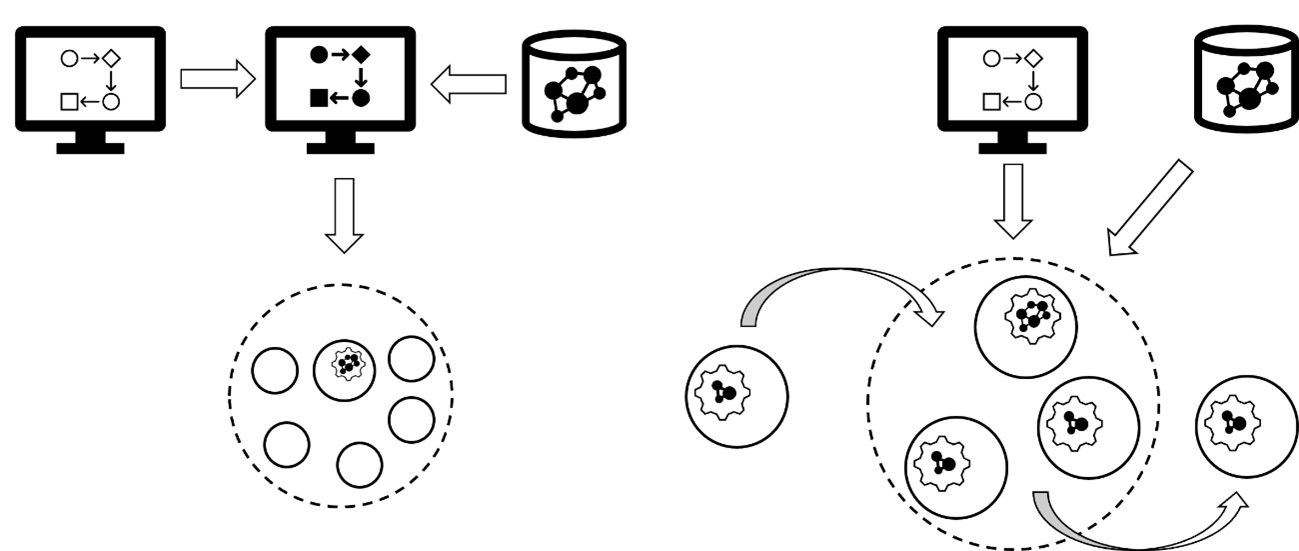
Figure 1: SmartEdge Node Concept.
A key metaphor for this is a group of people working on a shared task. Each person (or device) has its own perception of the environment, makes decisions based on what it knows, and communicates with others. This analogy captures the essence of SmartEdge’s decentralised, knowledge-driven approach. Communication among devices is managed using semantic interoperability, enabling different systems to understand each other regardless of the protocols or data formats they use.
To ensure effective real-time collaboration, SmartEdge is built on three core innovations:
- Swarm Management and Security is focused on swarm formation and resilience. This component ensures devices can join and leave swarms dynamically and securely, for example, through hybrid in-network classification [1]. It leverages programmable network technology to maintain fast, low-latency coordination among devices.
- Continuous Semantic Integration provides a shared understanding across devices through ontologies and live environment modelling. Devices can fuse knowledge in real-time, allowing them to make informed decisions even when direct sensory data is limited.
- Low-Code Programming Tools are designed for usability. These tools allow developers and domain experts to build smart edge applications without deep programming expertise. The tools are compatible with various platforms and messaging protocols, such as MQTT, ROS, or OPC-UA.
SmartEdge nodes are classified into two categories: basic nodes (legacy or simpler devices) and smart-nodes (enhanced devices with full SmartEdge capabilities). Smart-nodes are equipped with layers that include an intelligent network layer (implemented in technologies like P4 for high-speed packet processing), a middleware layer for semantic message exchange, and an application layer where domain-specific tasks are executed (Figure 2).
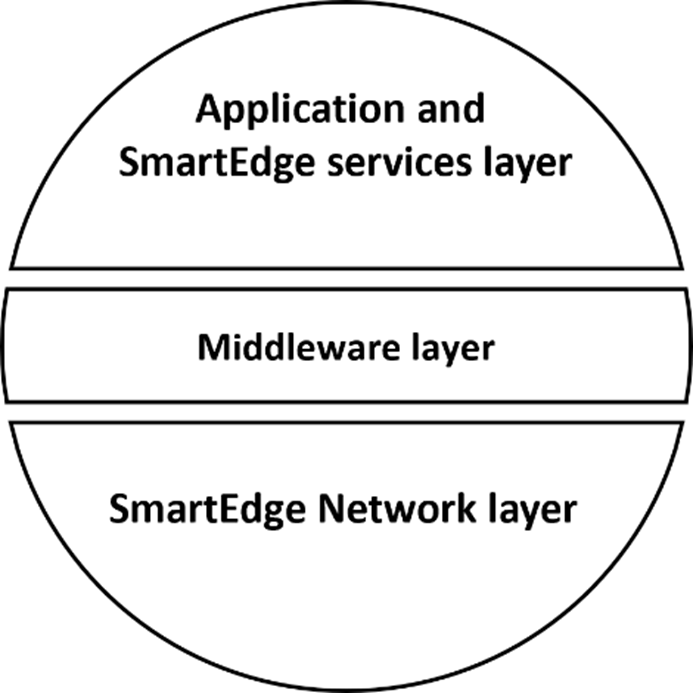
Figure 2: SmartEdge Smart-node Layers.
Each smart-node is assigned a unique identifier (URI), allowing it to maintain communication even when moving between different network domains, a key feature for mobile edge devices like autonomous robots. A central or distributed Address Resolution Table (ART) ensures that devices can always find and communicate with each other.
Looking ahead, SmartEdge aims to support “Swarm as a Service” models, where external devices can temporarily join swarms for mutual benefit, for example, a smart vehicle briefly joining a traffic control swarm to optimise its path through an intersection.
By integrating decentralised intelligence, semantic interoperability, and a user-friendly development interface, SmartEdge is charting a path toward more flexible and resilient edge computing infrastructures. The project is a step forward in realizing autonomous, collaborative systems that operate close to where data is generated, empowering smarter cities, factories, and environments.
Future activities should focus on promoting standardisation, improving the developer experience and integrating advanced AI capabilities. By adapting to emerging industry standards and contributing to open ecosystems, SmartEdge aims to ensure interoperability and long-term adoption. Simplifying the low-code toolchain through intuitive interfaces and developer-friendly tools will enable a broader range of users, including SMEs and domain experts without deep technical background knowledge, to develop. By integrating AI-driven orchestration and decision-making, swarms can also learn, adapt and optimise in real time, making them even more autonomous, resilient and scalable.
The project brings together a diverse consortium of partners, led by the coordinator CNIT (Consorzio Nazionale Interuniversitario per le Telecomunicazioni), and including Technische Universität Berlin, Aalto University, Conveqs, the University of Oxford, Bosch, Siemens, ERCIM, Dell Technologies, Cefriel, NVIDIA, IMC, Fraunhofer FOKUS, the University of Fribourg, and HES-SO.
Links:
[L1] https://www.smart-edge.eu/
[L2] https://www.smart-edge.eu/category/use-case/
Reference:
[1] C. Zheng et al., "IIsy: Hybrid In-Network Classification Using Programmable Switches," in IEEE/ACM Transactions on Networking, vol. 32, no. 3, pp. 2555-2570, June 2024, doi: 10.1109/TNET.2024.3364757.
Please contact:
André Paul, Fraunhofer FOKUS, Germany

